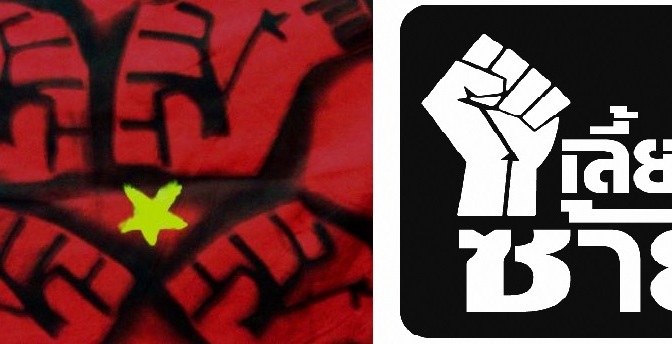Giles Ji Ungpakorn
The answer to this question lies with the history of past struggles against the military and especially the role of the Communist Party of Thailand (CPT). The CPT was established in the late 1920’s among urban workers of Chinese ethnicity who made up the early Thai working class. Unlike some other communist parties, there is no indication that it was ever anything else but a Stalinist organisation.
In 1973 half a million people, mainly young school and university students, but also ordinary working people, managed to overthrow the military dictatorship of the time. It was the first mass popular uprising in modern Thai history.
Under the dictatorship trade union rights had been suppressed and wages and conditions of employment were tightly controlled. Yet, illegal strikes occurred throughout the period and increased rapidly in the early 1970’s due to general economic discontent.
Economic development also resulted in a massive expansion of student numbers and an increased intake of students from working class backgrounds. These students became radicalized due to the 1968 events abroad and the defeat of the USA in Indo-China.
In October 1973 the arrest of 11 academics and students for handing out leaflets demanding a democratic constitution, resulted in hundreds of thousands of students and workers taking to the streets of Bangkok. The successful 14th October 1973 mass uprising against the military dictatorship was a watershed event. Workers, peasants and students began to fight for more than just parliamentary democracy. In the two months following the uprising, the new appointed civilian government faced a total of 300 workers’ strikes. New radical student bodies sprang up. On the 1st May 1975 a quarter of a million workers rallied in Bangkok and a year later half a million workers took part in a general strike against price increases. In the countryside small farmers began to build organisations and they came to Bangkok to make their voices heard. A Triple Alliance between students, workers and small farmers was created. Some activists wanted an end to exploitation and capitalism itself. The influence of the illegal Communist Party of Thailand increased rapidly, especially among activists in urban areas.
Originally the party organised urban workers in the 1940s and 1950s, but it took a Maoist turn away from the working class and towards the peasantry, in the 1960s. This Maoist turn to the countryside became a serious problem for workers and the Left in general.
The Thai ruling class’ desire to destroy the further development of the socialist movement, came to a head with the 1976 bloodbath at Thammasat University. Thousands of students went to the countryside to join the armed struggle against the Thai State led by the CPT but the problem with the party’s Maoist strategy was that it more or less abandoned the city and the working class to government repression.
Three years after 1976, splits and arguments between the student activists and the conservative CPT leaders resulted in an exodus from the CPT camps. It was the failure of the CPT to develop a credible strategy for the Thai socialist revolution and a failure to relate to the new generation of young activists who joined the struggle in the 1970s. The emphasis on rural armed struggle in Thailand did not fit reality. Since 1932 all significant social changes have taken place in the cities. The authoritarian nature of the CPT leadership alienated the students. The main experience of student activists in the jungle with the CPT was a stifling of all original ideas and a lack of any freedom to debate. Finally, the party’s Maoism backfired when the Chinese government turned its back on the party in order to build a relationship with the Thai ruling class in the new geo-political situation after the Vietnam War.
By 1988 the student activists had all returned to the city as the CPT collapsed. In the eyes of thousands of activists their experience of communist ideas and organisation was a deep disappointment. Unfortunately, unlike in the West, alternative and “new” Marxist organisations, especially those from a Trotskyist tradition, had no significant presence and could not rescue the Marxist tradition.
Today, even among the best anti-junta activists, there is still an unwillingness to build mass movements and an aversion to party organisation. [See https://bit.ly/2cj7nCx ].
In the late 1990’s I was involved in re-establishing a Marxist and Trotskyist current among small groups of students and trade unionists. But our organisation was not strong enough to withstand the repression and use of lèse-majesté following the two recent military coups. Never the less, interest in Marxism and socialism, especially among some young people, has not been totally snuffed out. It is hoped that this will eventually lead to a revival of the organised Left at some stage in the future.










